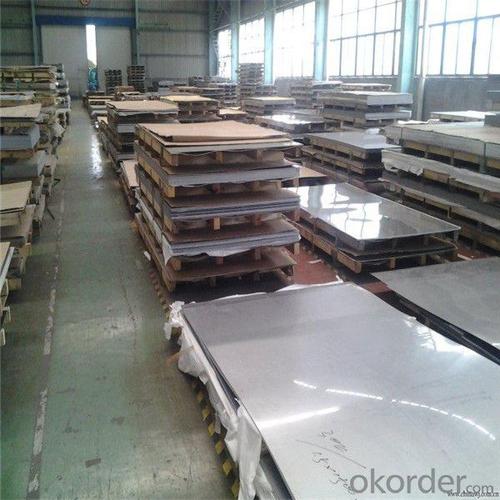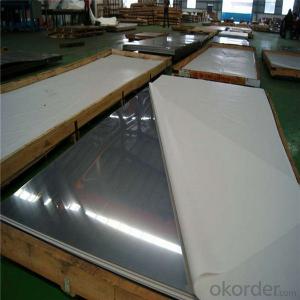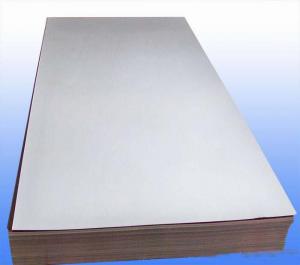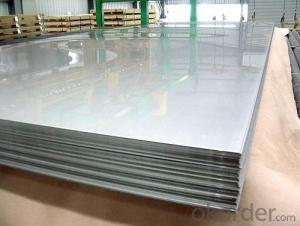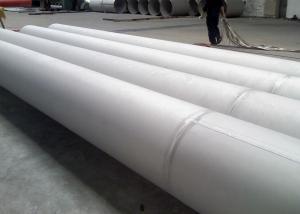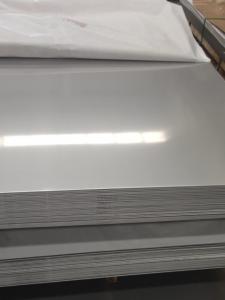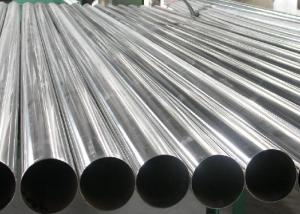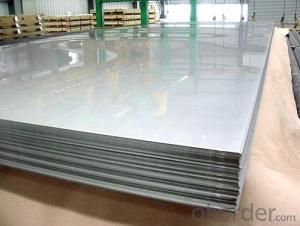310s Stainless Steel Sheet & Plate in China
- Loading Port:
- Shanghai
- Payment Terms:
- TT OR LC
- Min Order Qty:
- 4 m.t.
- Supply Capability:
- 20000 m.t./month
OKorder Service Pledge
OKorder Financial Service
You Might Also Like
Specification
Specifications
310s stainless steel sheet & plate
1 length1000-6000mm
2 width 1000-2500mm
3 thickness:0.3-120mm
310s stainless steel sheet & plate
cold draw hot rolled stainless steel plate
1 length1000-6000mm
2 width 1000-2500mm
3 thickness:0.3-120mm
Product Information
| Product Name | Stainless Steel sheets |
Material | 201/202/301/304/304L/316/316L/410/420 |
Technique | Cold Rolled, Cold Drawn, Hot Rolled |
Standard | ASTM,AISI,GB,DIN |
Thickness | 0.3mm-120mm or as your requirement |
Width | 1000mm-2500mm or as your requirement |
Length | 1000mm-6000mm or as your requirement |
Surface Treatment | No.1,2B,No.4,BA,2B,hairline, No 8 |
Packing | 1. Export sea worthy package + water proof paper + wooden pallet 2. Max Loading 26.5mt for each 20Gp container 3. Safe loading and fixing Professional Teams 4. Professional shipping line |
Delivery | Within 15days after received deposit |
Price Item | T/T,L/C |
Application | Stainless Steel Sheets are widely used in below fields: 1: Construction field, shipping building industry 2: Petroleum and Chemical Industries 3: Food and Mechanical Industries |

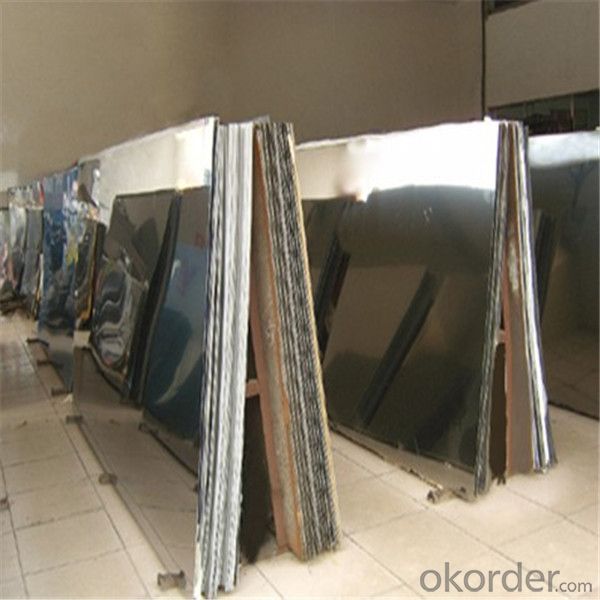
- Q: Can stainless steel sheets be used for power generation equipment?
- Stainless steel sheets are indeed applicable for power generation equipment. With its versatility, stainless steel possesses a range of advantageous qualities specifically tailored for power generation applications. Its corrosion resistance is exceptional, a paramount characteristic for equipment that comes into contact with water, steam, or other corrosive substances. Moreover, stainless steel exhibits remarkable strength and durability, enabling it to withstand the elevated temperatures and pressures frequently encountered in power generation systems. Another notable attribute is its proficiency as an electrical conductor, rendering it suitable for electrical components and connections within the equipment. Consequently, stainless steel sheets are widely employed in the construction of power generation equipment, including turbines, boilers, heat exchangers, and exhaust systems.
- Q: What are the different types of stainless steel sheet surface coatings for outdoor applications?
- Outdoor applications commonly use various types of stainless steel sheet surface coatings. These coatings aim to enhance the stainless steel's durability and corrosion resistance, making it suitable for harsh outdoor environments. One commonly used coating for outdoor applications is powder coating. This involves applying a dry powder to the stainless steel surface and then curing it under heat to create a protective layer. Powder coating offers excellent resistance against corrosion, UV rays, and chemicals, making it perfect for outdoor use. Furthermore, it provides a wide range of color options, allowing for customization and aesthetic appeal. Another type of coating frequently employed for outdoor applications is PVD (Physical Vapor Deposition) coating. This process entails depositing a thin film of material onto the stainless steel surface using a vacuum chamber. PVD coatings offer outstanding adhesion, wear resistance, and corrosion resistance, making them suitable for outdoor use. They also provide various decorative finishes like gold, bronze, or black, which can enhance the stainless steel's appearance. In addition, stainless steel can be coated with ceramic for outdoor applications. Ceramic coatings are typically applied using a high-temperature spray process, resulting in a hard, protective layer on the stainless steel surface. These coatings offer superior resistance against abrasion, chemicals, and UV rays, making them ideal for highly durable outdoor applications. To summarize, stainless steel sheet surface coatings for outdoor applications include powder coating, PVD coatings, and ceramic coatings. Each of these coatings offers distinct benefits in terms of corrosion resistance, durability, and aesthetic appeal, enabling the use of stainless steel in a wide range of outdoor environments.
- Q: How about stainless steel grades?
- According to the composition can be divided into Cr (400 Series), Cr Ni system (300 Series), Cr Mn Ni (200 Series) and the precipitation hardening systems (Series 600). 200 series - chromium nickel manganese austenitic stainless steel 300 series - chromium nickel austenitic stainless steel 301 - ductility, used for molding products. It can also be hardened rapidly by mechanical processing. Good weldability. The abrasion resistance and fatigue strength are better than 304 stainless steel. 302 - 304 with corrosion resistance, due to the relatively high carbon intensity. 303 - by adding a small amount of sulfur and phosphorus, it is easier to cut than 304.
- Q: Can stainless steel sheets be used for railway infrastructure?
- Yes, stainless steel sheets can be used for railway infrastructure. Stainless steel is a versatile and durable material that offers various advantages for railway applications. Its corrosion resistance properties make it suitable for outdoor and high humidity environments, which are common in railway infrastructure. Stainless steel sheets can withstand harsh weather conditions, including extreme temperatures, rain, and UV radiation, without corroding or deteriorating. This makes them ideal for railway tracks, bridges, tunnels, and other structures that are exposed to the elements. Additionally, stainless steel sheets have excellent strength-to-weight ratio, allowing for the construction of lightweight yet sturdy railway infrastructure. This reduces the load on the overall structure and facilitates easier transportation and installation. Stainless steel is also resistant to fire and can withstand high impact, making it a reliable choice for railway applications where safety is a priority. Furthermore, stainless steel sheets are easy to clean and maintain, which is beneficial for railway infrastructure that requires regular upkeep. They can be easily polished to restore their aesthetic appeal and maintain a clean appearance. Stainless steel is also recyclable, making it an environmentally friendly choice for sustainable railway construction. In summary, stainless steel sheets can indeed be used for railway infrastructure due to their corrosion resistance, strength, durability, fire resistance, ease of maintenance, and sustainability.
- Q: Can stainless steel sheets be cut or shaped easily?
- Yes, stainless steel sheets can be cut or shaped easily. Stainless steel is known for its excellent machinability and workability, making it relatively easy to cut, shape, and form into desired shapes or sizes with the right tools and techniques.
- Q: What are the different types of stainless steel sheet grades available?
- There are several different types of stainless steel sheet grades available, each with its own unique properties and applications. Some of the most common stainless steel sheet grades include: 1. Austenitic stainless steel: This is the most widely used type of stainless steel, known for its excellent corrosion resistance and high ductility. It is non-magnetic and can be easily formed and welded. Grades within this category include 304 and 316. 2. Ferritic stainless steel: Ferritic stainless steel is known for its magnetic properties and excellent resistance to corrosion, particularly in high-temperature environments. It is less ductile than austenitic stainless steel but offers good strength and formability. Common grades in this category include 430 and 409. 3. Martensitic stainless steel: Martensitic stainless steel is characterized by its high strength, hardness, and wear resistance. It is often used in applications where toughness and corrosion resistance are less important. Popular grades within this category include 410 and 420. 4. Duplex stainless steel: Duplex stainless steel is a combination of austenitic and ferritic stainless steels, offering a unique blend of strength, corrosion resistance, and cost-effectiveness. It is highly resistant to stress corrosion cracking and is often used in industries such as oil and gas, chemical processing, and marine applications. Common grades in this category include 2205 and 2507. 5. Precipitation hardening stainless steel: Precipitation hardening stainless steel is heat-treatable and offers high strength and corrosion resistance. It is often used in aerospace and high-performance applications where a combination of strength and corrosion resistance is required. Popular grades within this category include 17-4 PH and 15-5 PH. These are just a few examples of the different types of stainless steel sheet grades available. Each grade has its own specific characteristics and is selected based on the desired properties and intended application.
- Q: Are stainless steel sheets suitable for water tanks?
- Stainless steel sheets are indeed a great option for water tanks. Their resistance to corrosion makes them perfect for water storage. They won't react with the water or introduce any harmful substances into it. Additionally, stainless steel tanks are durable, require little maintenance, and have a long lifespan. They can handle high temperatures and extreme weather conditions without compromising their structural integrity. Moreover, stainless steel is non-porous, preventing the growth of bacteria and algae. These outstanding characteristics make stainless steel sheets a superb choice for water tanks in different settings, such as residential, commercial, and industrial environments.
- Q: Inspection method for stainless steel welding
- 1) measurement, in strict accordance with the requirements of the drawings, and to ensure that within tolerance. Along the column, a top cover, and frame, beam should be straight, without distortion, the straightness (nonstraightness) should meet the requirements on the table diagonal method.2) no distortion, swing, rotation or displacement are allowed in the structures which are completely fixed
- Q: What are the properties of stainless steel sheets?
- Stainless steel sheets possess multiple properties that make them extremely desirable in various industries and applications. To begin with, their excellent corrosion resistance is a result of the presence of chromium in the alloy, which forms a protective oxide layer on the surface, preventing rust and staining. Moreover, stainless steel sheets are renowned for their strength and durability. They can withstand heavy loads and resist deformation due to their high tensile strength. This makes them suitable for applications requiring structural integrity and longevity, such as in construction, automotive, and aerospace sectors. Another significant property of stainless steel sheets is their resistance to heat and fire. They can endure high temperatures without losing their structural integrity or strength. As a result, they are ideal for applications involving extreme heat, like commercial kitchens and industrial furnaces. Additionally, stainless steel sheets are hygienic and easy to clean, making them suitable for use in the food and medical industries. Their non-porous surface prevents the growth of bacteria, making them a reliable choice for food processing equipment, surgical instruments, and medical devices. They also possess an attractive appearance, with a smooth, reflective surface that is easy to maintain. This makes them aesthetically pleasing and suitable for architectural and decorative applications, such as building facades, interior design, and furniture manufacturing. Lastly, stainless steel sheets are highly versatile and can be easily formed, welded, and fabricated into various shapes and sizes. This flexibility allows for customization and adaptation to specific project requirements, offering designers and engineers a wide range of possibilities. In summary, stainless steel sheets offer corrosion resistance, high strength and durability, heat and fire resistance, hygiene, ease of cleaning, an attractive appearance, and versatility. These properties have made them a popular choice in numerous industries, ensuring their widespread use in various applications.
- Q: What are the different types of patterned finishes available for stainless steel sheets?
- There are several different types of patterned finishes available for stainless steel sheets, each offering a unique aesthetic and functionality. Some of the most common patterned finishes include: 1. Diamond: This pattern features a raised diamond-shaped texture on the surface of the stainless steel sheet. It provides enhanced grip and is commonly used in applications where slip resistance is important, such as flooring or industrial equipment. 2. Linen: The linen finish is characterized by a textured pattern that resembles woven fabric. It adds a subtle elegance to stainless steel sheets and is often used in interior design applications, such as wall cladding or decorative panels. 3. Checkered: This pattern consists of a grid of raised squares or rectangles, giving the stainless steel sheet a checkerboard-like appearance. The checkered finish is often used for decorative purposes, as it adds visual interest and can create a retro or industrial look. 4. Bead Blasted: In this finish, the stainless steel sheet is blasted with fine glass beads to create a matte texture with a slightly rough surface. Bead blasted finishes are commonly used in architectural applications, as they provide a modern and uniform appearance while reducing glare and fingerprints. 5. Etched: Etched finishes involve chemically altering the surface of the stainless steel sheet to create intricate patterns or designs. This process can achieve a wide range of effects, from simple line patterns to complex images. Etched finishes are often used in decorative applications, such as signage, artwork, or custom designs. 6. Sandblasted: Similar to bead blasting, sandblasting involves using high-pressure sand or other abrasive materials to create a textured surface on the stainless steel sheet. This finish provides a rougher and more pronounced pattern compared to bead blasting, making it suitable for applications that require a more industrial or rugged appearance. 7. Mirror: While not technically a patterned finish, the mirror finish is worth mentioning as it is a popular choice for stainless steel sheets. This finish is achieved through a series of polishing and buffing processes, resulting in a highly reflective surface that resembles a mirror. The mirror finish is commonly used in architectural elements, such as cladding, decorative accents, or reflective surfaces. Overall, the choice of patterned finish for stainless steel sheets depends on the desired aesthetic, functionality, and specific application requirements. Each pattern offers a distinct look and texture, allowing for endless possibilities in design.
Send your message to us
310s Stainless Steel Sheet & Plate in China
- Loading Port:
- Shanghai
- Payment Terms:
- TT OR LC
- Min Order Qty:
- 4 m.t.
- Supply Capability:
- 20000 m.t./month
OKorder Service Pledge
OKorder Financial Service
Similar products
Hot products
Hot Searches
Related keywords


